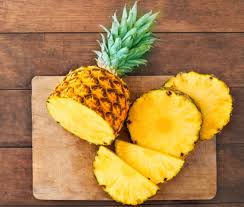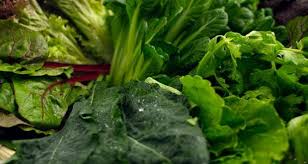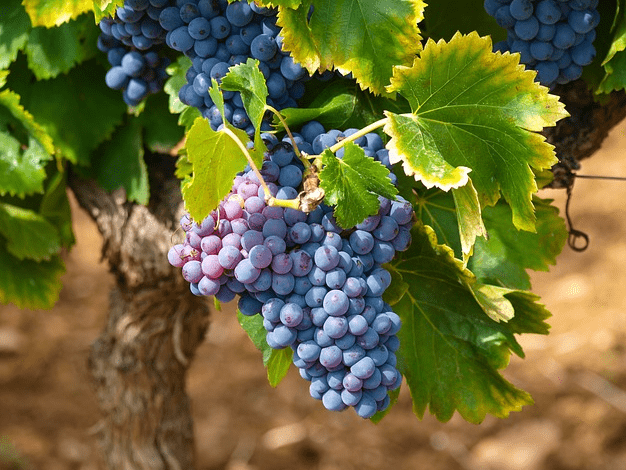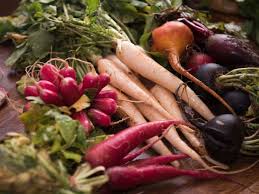Pineapple always seems to me like a fruit that is not only exotic, but simply drawn out of a fairy tale, a fruit that is eaten only on special occasions, and if you happen to find it in your fruit box it is a real celebration.
Maybe because fresh pineapple was once perceived like a fairy tale. We could recognize it mainly from pictures in books of distant and exotic places, but also from pictures of canned foods and the sugar-loaded fluorescent circles of dried pineapple in the Tu B'Shvat baskets.
The pineapple belongs to the Bromeliaceae family, and it also contains enzymes called Bromelain (more about that below), which reminds me a little of the story about Barmaley – for those who are acquainted, he too is related to Africa and exotic journeys.
The pineapple originated in Brazil, Bolivia and Paraguay. There it still grows wild, and the locals summed up what they thought of the fruit in the name they gave it, since "pineapple" means "good fruit." And the pineapple is indeed good – it contains a wealth of Vitamin C, which in previous times, when they still did not know about the existence of vitamins and capsules of synthetic vitamins were not available, it was Vitamin C that saved people from scurvy.
Today the disease sounds unfamiliar, especially in regions like ours, that are rich with citrus (and sweet pepper, and kiwi…). that have plenty of Vitamin C. But once, when people boarded ships with a compass and an approximate map (and no satellite equipment) on their journey to discover new continents and new passages to distant lands – Vitamin C was the difference between life and a most unpleasant death. Christopher Columbus (and his team of sailors) was lucky that the pineapple was discovered.
While Columbus introduced the pineapple to the Europeans, someone else is responsible for its widespread distribution in cans. A gentleman by the name of James Dole was wise enough to understand, early in the last century, that anyone who tastes this fruit will fall in love with it. His vision turned into vast pineapple plantations in Hawaii, and he set up a factory for canning foods (and to distribute them to dozens of countries).
The fresh fruit is of course much tastier (especially when it is not swimming in concentrated sugar syrup) and also healthier. In addition to vitamin C, it also contains bromelain that helps protect the body against cancerous tumors (it is also an anti-inflammatory substance that can help with arthritis and slow down the process of joint degeneration) as well as nutritional fiber that helps the digestive system work better, makes the belly feel full and assists to lower the levels of blood sugar and fat – meaning they also contribute to weight loss. Also, the Vitamin B in the pineapple contributes to better metabolism and weight loss, since it helps transition carbohydrates into available energy.
What more good things are in pineapple? Iodine, for example. 100 grams of fresh pineapple contain about a third of the recommended daily dose of iodine for adults – an essential mineral for maintaining the thyroid gland healthy, and is seldom found in fruit. In addition to all these, it also contains potassium and beta-carotene (which helps keep the eyes healthy).
Organic pineapple is a fruit that fosters patience. Each seedling (it is a perennial plant) will yield one fruit after approximately 22 months of watering and nurturing (in the following years the plant will yield more fruit, but the first fruit will be after a year and a half or two). The fruit should definitely not be eaten before it is ripe, because an unripe pineapple may be poisonous. Although pineapple is associated with places like Thailand or Brazil, meaning tropical climate, it is also grown in Israel – in the southern Negev and around the Jordan River. It turns out that for pineapples, also a dessert is tropical.
Although it prefers plastic greenhouses in the winter (or at least a sweater) and a shade net in the summer, 5,000 tons of pineapple produce per year is not a small number at all (although a bit far from Thailand, the unchallenged dominator in terms of growing pineapples, with 1.97 million tons per year).
So peel yourself a pineapple (its amazing smell stays on your fingers), put a few slices for decoration, or inside a salad, add to a fruit-shake or just as a luxurious addition to the water bottle you take with you during the day – and feel like your'e in Thailand for a moment…
Yours,
Maggie's Garden Team
Forecast:
In the ORGANIC vegetable baskets we expect (draft only):
Cucumber
Tomato
Lettuce
Potato
Carrot
Onion
Parsley
Pumpkin
Green Bean
The LARGE organic vegetable baskets also include:
Beet
Coriander
Carrot
In the ORGANIC fruit baskets:
Sweetie
Red grapefruit
Red Pomelo
The large ORGANIC fruit baskets also include:
Banana
Dates
New! New! The ORGANIC Green Basket:
Swiss chard
Celery root
Spinach
Green onion
Dill
A kind of lettuce
Mint
Sprouts











